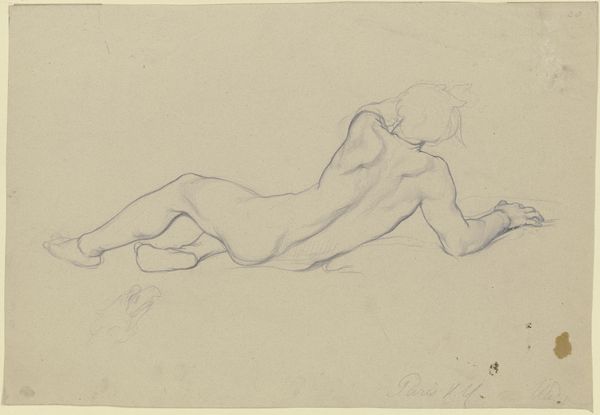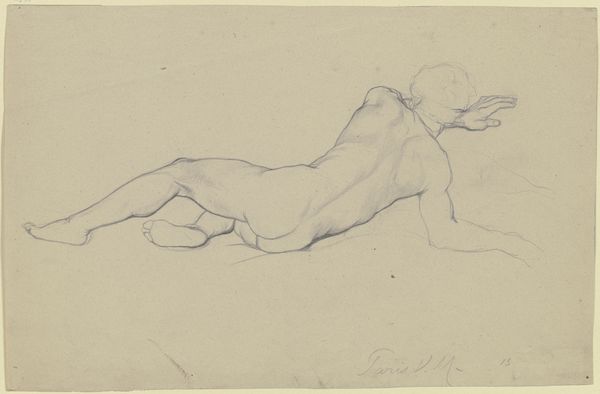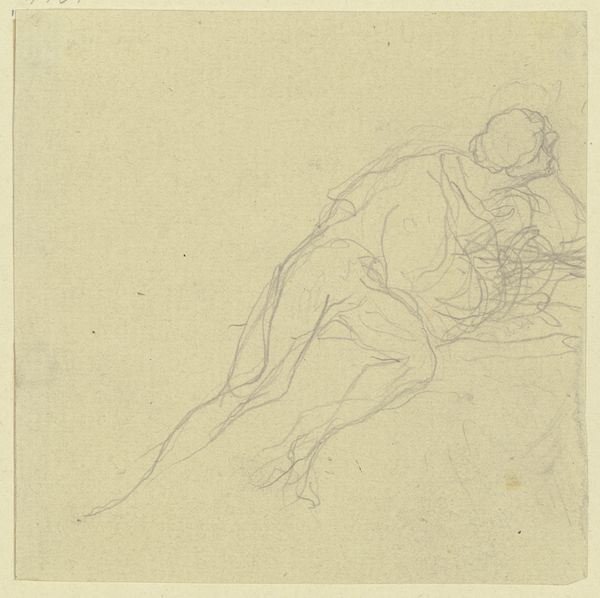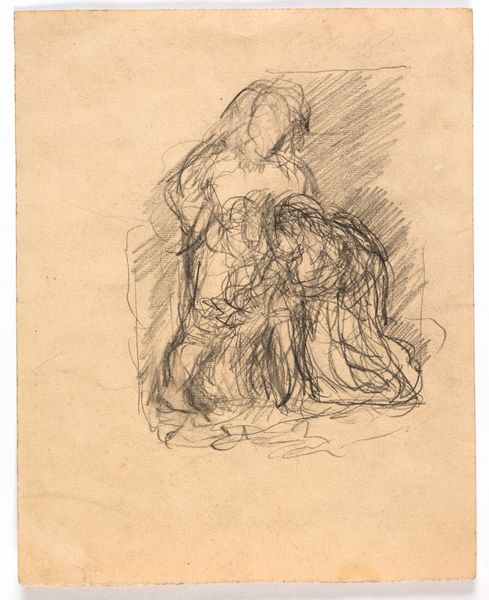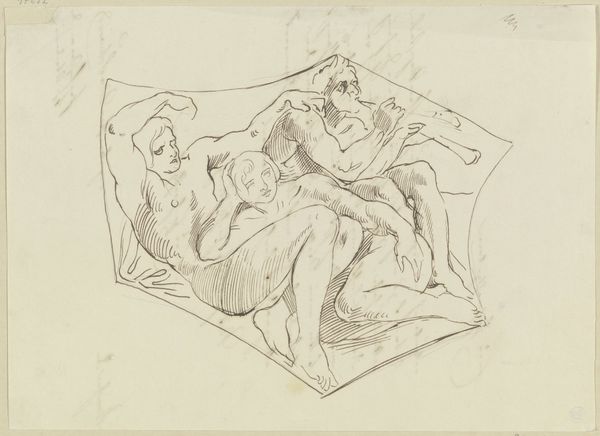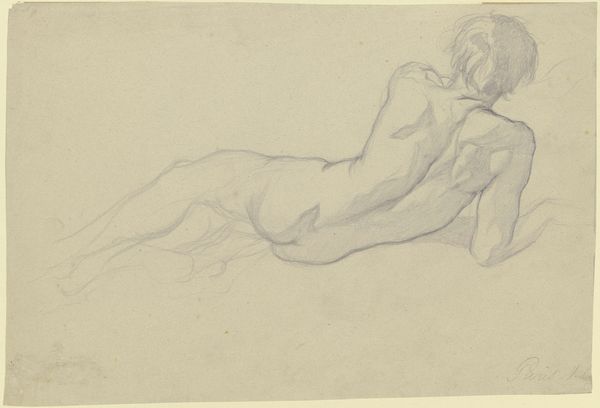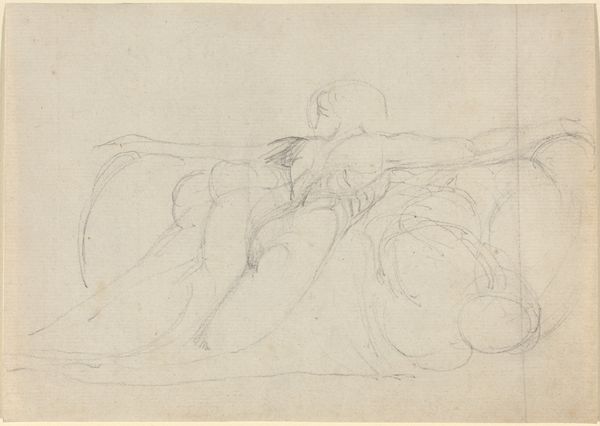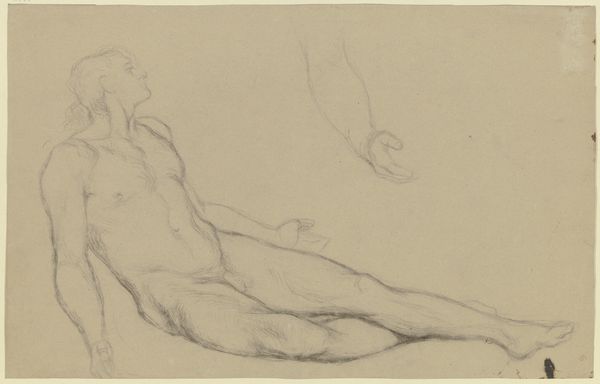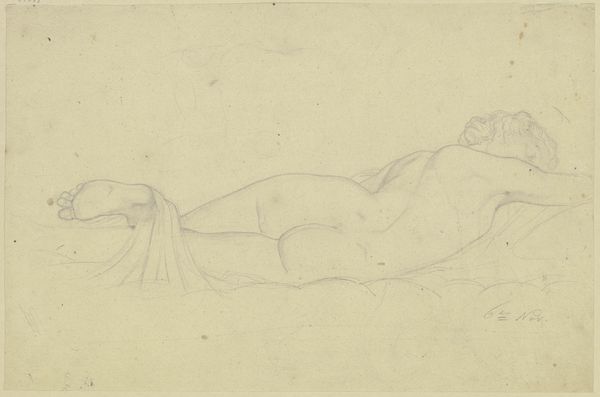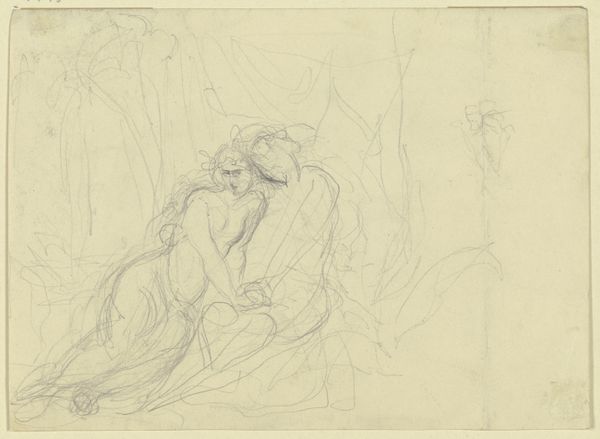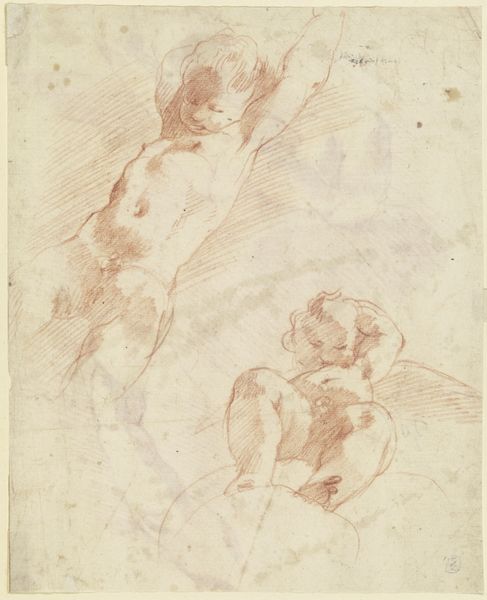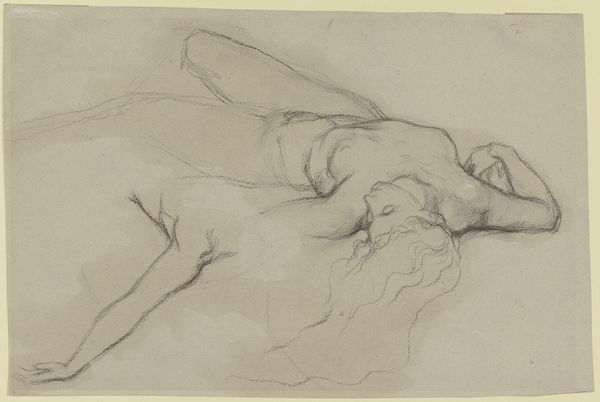
Copyright: Public Domain
Curator: Moritz von Schwind's drawing, "Acrobatic Games; The Night Lager of Granada," created around 1858-59, presents an intimate gathering, executed with pencil on paper, now residing in the Städel Museum. Editor: My immediate reaction is one of somber intimacy, even with the title suggesting playful acrobats. The paleness of the pencil drawing adds a ghostly quality, don't you think? Curator: Absolutely. Look how von Schwind employed hatching to establish form and depth, creating tonal values which produce the effect of a single, fluid visual field. This echoes classical sketches where preliminary line work signifies volume over mass. Editor: I see what you mean. The forms almost dissolve into each other. It’s dreamlike. Granada evokes Moorish Spain, so the “Night Lager” hints at the imagery of temporary shelter or even forced displacement—perhaps echoing historical battles. Does it connect to a broader iconography of romantic longing or national identity formation? Curator: Interesting. Romanticism certainly aimed at such emotional engagement through themes, but I see the work operating successfully through more fundamental means. Consider the grouping of figures, unified through the overlapping lines—note, for example, the use of vertical strokes around the legs to contrast them against the horizontal rest. It provides compositional unity which evokes something of human interdependence without specific contextual indicators. Editor: I understand the structural reading, yet symbols emerge: Granada holds historical and cultural significance, conjuring notions of courtly love and Islamic art. The seemingly careless position of the bodies invites us to ponder their weariness, pointing towards possible implications. I sense a melancholy here – these aren't gleeful acrobats. Curator: Melancholy or not, the beauty here arises less from these external markers of "Granada," than from Schwind's rendering of an enclosed form. We see a triangular figure of individuals—with some clear internal contrasts via chiaroscuro—but existing fundamentally in isolation given its reliance solely upon internal formal relationships. Editor: I think we're touching upon two sides of the same coin: form shaping symbolic meaning. The formal constraints amplify those potential historical anxieties I noticed initially. Even the way light is distributed has symbolic weight, in how it reveals figures within an implied dark setting. Curator: Fair point. I hadn't thought about it that way. Von Schwind achieves powerful depth, I believe, precisely by making his medium almost transparent. Editor: And in turn, the viewer then becomes a sensitive reader of these visual histories, I would argue. A somber, complex piece—inviting several interpretations indeed.
Comments
No comments
Be the first to comment and join the conversation on the ultimate creative platform.
